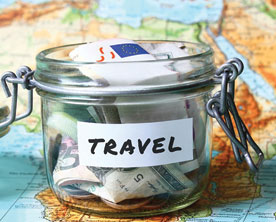The popular adage that reiterates age-old wisdom, “a penny saved, is a penny earned”, does not accurately reflect the savings habits of people in Myanmar. Saving levels in the country are low, and savings not a habit. Blame it on poverty, lack of resources, or the growing middle class’ preference for conspicuous consumption over thrift, the end result is a gross savings rate of 26.7 %, reveal statistics of March 2017. With the advent of the latest technology that places money in mobile wallets, money has become even easier to spend, and the credit card culture spreading gradually, will ensure that people spend even before they earn.
There has to be an inclination to save, put aside a small amount ‘for the rainy day’, and instead of waiting to see what is left over from earnings after all expenses have been met, it is important to stash away a small amount, perhaps 10% of earnings, as soon as they come in hand, and then budget expenses out of the balance that remains. Saving was still a priority of the older generation, but the wave of consumerism, the exposure to western products and brands, the desire to keep up with peers, has made spending a distinct preference.
On a larger scale savings accumulate and become capital, and this then finds investment routes, which finance a nation’s development. Higher rates of savings have been linked to higher rates of economic growth and development, while low savings lead to poverty traps and economic stagnation. The bottom line being that savings depend on income – higher incomes imply a higher propensity to save, while lower incomes leave little to be saved since entire incomes get spent on sustenance and basic necessities.
Saving patterns vary widely across nations, Asian countries being famous for higher savings than the rest of the world. East Asia saves nearly 30% of its gross national disposable income, while Sub-Saharan Africa saves less than 15%. What is common, though, is that developing countries offer fewer options that can help smooth out variations in income, especially the dips.
Savings are important at both micro and macro level. At the micro level, they provide for a secure future, encourage thrift, and help meet emergency expenses without being burdened with debilitating debt. At the macro level, the country benefits from savings because these become the channel to fund investments. Individual savings accumulate to become capital that can be invested in productive assets. It has been empirically found that domestic resources funding investment lead to higher, sustainable growth rates. The higher the investment, the higher the rate of economic growth, but high investment requires high savings rates. Mobilizing these savings will help the country surge ahead on the economic front. Using external resources to fund investments do not yield a sustainable rate of growth.
Savings are even more important in Myanmar, given its stage of development and a need for domestic capital to fund basic infrastructure. Industrialized Asian countries like Taiwan, Singapore, South Korea have seen registered savings rates of up to 30% of GDP, while Myanmar’s rates remain below 20%, causing investments to remain low, which in turn impact economic growth.
Saving Trends in Myanmar
The rate of domestic savings have been low for the last few decades. Low incomes, a primarily rural population engaged in agriculture and related activities, lack of education and alternative employment opportunities meant that even subsistence was not a given, leave alone saving. Saving implies postponing a segment of present consumption for the sake of future consumption, in the absence of a regular flow of income. This seems so appropriate for agrarian populations that may see a good crop one year, and a failed one the next, or the produce being damaged by floods. Unfortunately, there is seldom any surplus for the poorer farmers. The same holds true for the urban poor as well, who can barely make ends meet.
Savings, thus require an income level that is marginally above the subsistence level. Income levels are beginning to rise as Myanmar develops and more employment opportunities emerge.
There are few constraints to saving by the common man. The lower class earn barely enough to meet their basic needs of food and shelter, which also often keeps them under the burden of debt. The middle class is not encouraged to save, due to the absence of save avenues of keeping savings till recently, a distrust of banks due to past history of losing savings, and very low returns made people prefer spending to saving. As inflation rates increase, the rate of savings reduces.
Myanmar, till very recently, offers limited access to basic financial services. This partly explains the low level of formal savings. Over 62% of the population does not report any savings at all and around 26% save at home, or with people they know. This when compared to the GDP and saving rates of neighbouring Asian nations, seems stunted.
The process of financial reform started from a very low base, with few banks and formal financial institutions. In the last five years, the financial sector has seen tremendous change and has made rapid strides. From only 17% of citizens holding bank accounts in 2013, the number is slowly increasing, and the unbanked population is the target for all banks, to switch from saving with companies in the informal sector. Surveys conducted reveal that over half the savers keep their savings at home, while 29% keep it in the form of gold and jewellery, both being highly saleable. Past mistrust of the banking system prevented banks being considered as safe havens for hard earned money. Informal financial service companies were preferred, and it was these, that people turned to, for borrowing small amounts to meet emergency expenses, at phenomenal rates of interest, often above 2% per month. This is where the lower classes got caught in debt traps.
Ways to Encourage Savings
Savings have to become a habit, and the first steps are always difficult. It requires foregoing current consumption for the sake of future consumption, cutting corners and spending less, and putting aside a small portion of income as soon as it is received, rather than wait for the month to end and waiting to see how much is left over. Whether this is put in a jar, under a pile of clothes or in a bank account, savings are a saviour, since they help us tide over the exigency instead of being forced to borrow at phenomenal rates of interest.
The government and financial institutions can play a major role in encouraging the savings habit. By trying to spread financial literacy and educating the masses, a small proportion of earnings put away, can amount to millions if the entire population follows. For those who have never saved, it is important to highlight how a small reduction in present consumption, can ensure that they have some money for future use on essentials.
The government also needs to offer some impetus to save, by facilitating the opening of bank accounts and offering higher interest rates, which will add to their even small savings. Once the banking system expands, other investment options can be offered to citizens, which are safe, convenient and easy to liquidate.
The banking network at present consists of 4 state-owned banks, 13 foreign banks, 10 semi government banks and 14 private banks. The domestic banks are extending their reach by opening new branches, but more branches in rural areas, with easier account opening procedures, lower minimum limits, would bring tens of thousands into the banking fold.
And once the common man begins to feel financially secure, and feel the comfort it brings, savings will become a permanent habit.










